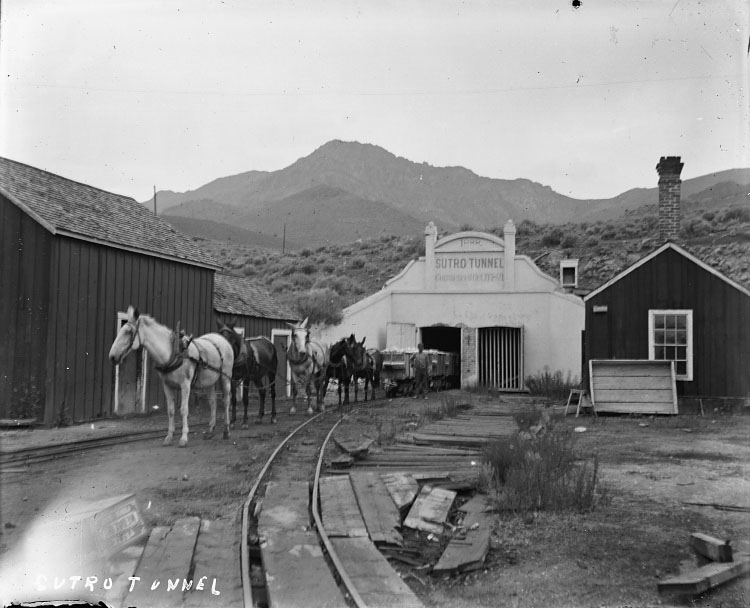
Mules, rather than horses, assisted in the construction of the famous Sutro Tunnel. They were more agreeable to working underground and avoided injury. In addition, mules provided comic relief to the miners and enjoyed sharing their lunch. Sutro built a unique barn to care for the mules, which Friends of Sutro is preserving.
Mules in Mining
Mules are a result of breeding a male donkey with a female horse, they are the oldest known artificial hybrid, first created in Turkey. Christopher Columbus first brought mules to North America, and George Washington was known as the father of American mules after breeding fifty-seven mules at Mount Vernon.

The oldest mines in the United States utilized mules. They were more sure-footed and could pull or carry more weight per pound while eating less quantity and quality of food than horses. In addition, they avoided danger and overworking themselves. Some say mules are more intelligent and less hard-headed than a donkey and live longer than horses. Another benefit of mules in Nevada is they can tolerate the arid desert.
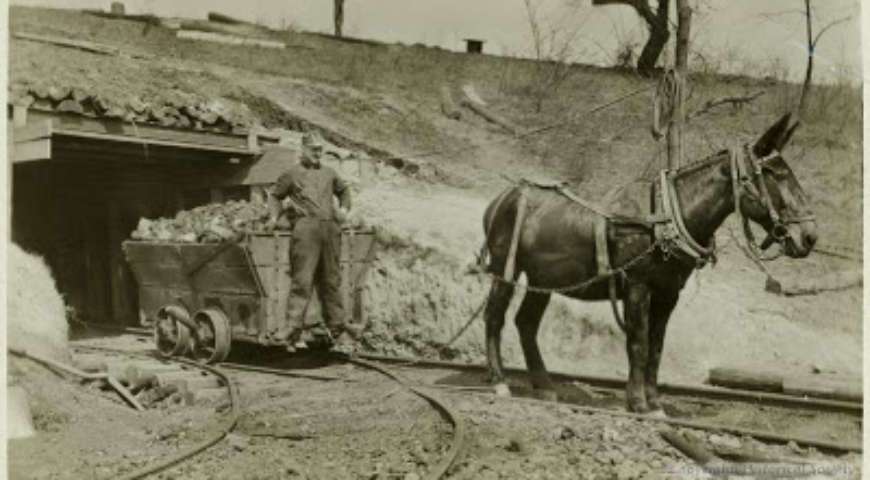
(Photo credit: Visit Carson Valley)
In the Comstock Lode, mules were critical and handled the majority of freight. Mine owners began to use mules in mines in the late 1800s to pull ore carts on tracks.
Sutro Tunnel’s Mules
Early in constructing the Sutro Tunnel, Adolph Sutro used horses to haul carts full of waste rock. While powerful animals, he found them to be skittish. Anything that touched their ears would cause them to rear up their head and hurt their skull on the overhanging rock. At the signal of an impending blast, miners had to pull horses to safety.
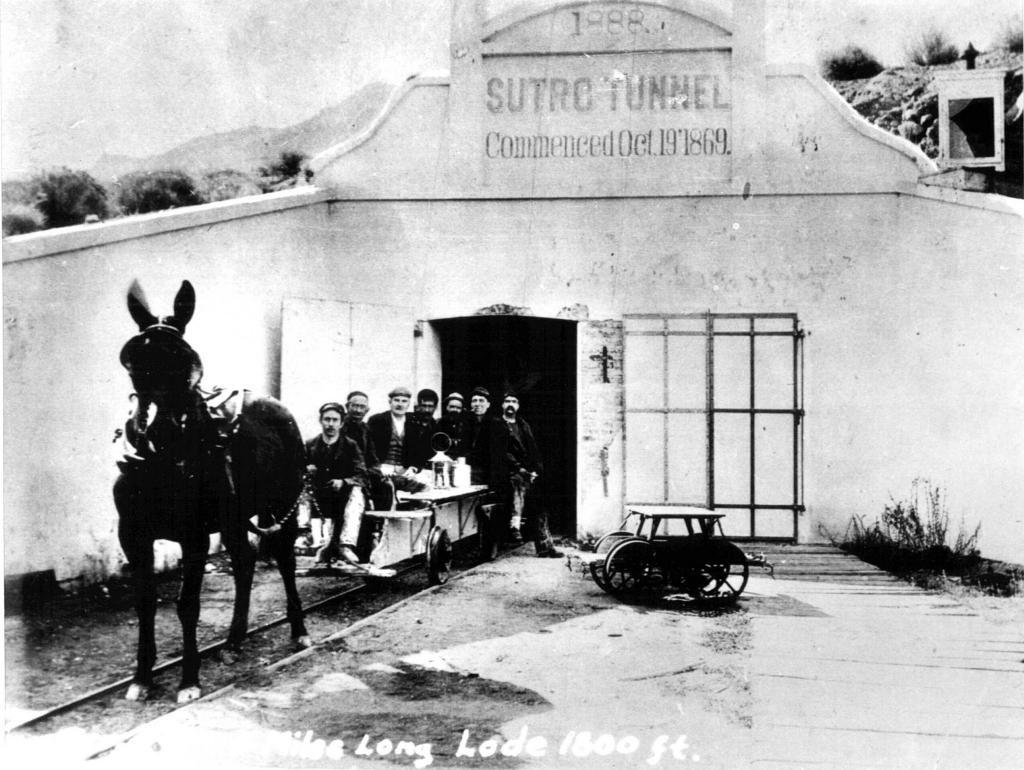
Sutro found mules more efficient and tolerant of working in his tunnel. As the tunnel ceiling was only ten feet tall, they had more clearance to the rock. When startled, they would lower their head, avoiding injury. When miners signaled a blast, mules understood and would seek safety.
The little beasts understood the signals perfectly and sought safety as diligently as the men.
Adolph Sutro: A Biography
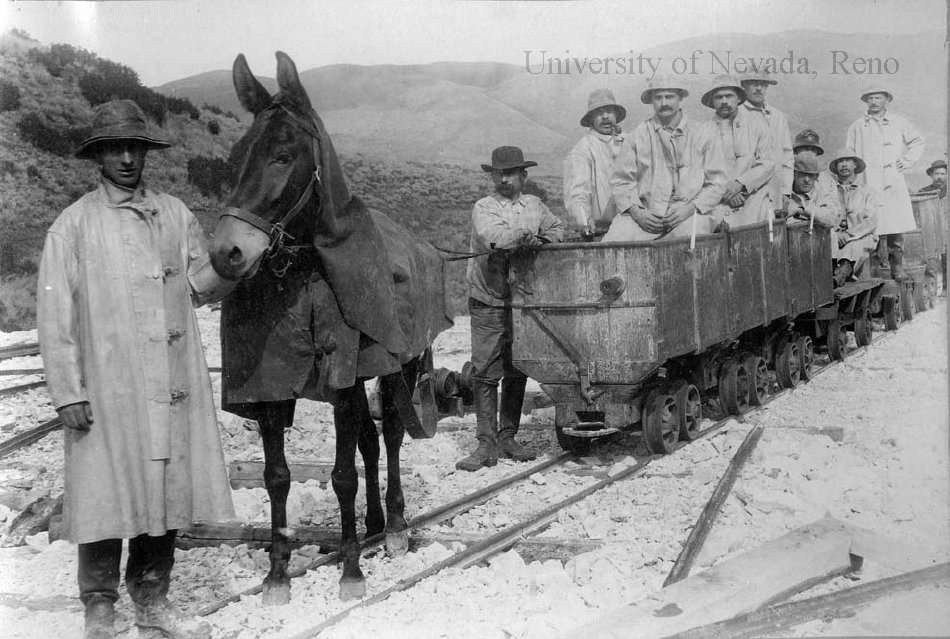
(Photo credit: UNR Libraries)
Just for Laughs
Suto looked after his miners and enjoyed seeing his workers having fun. Mules provided comic relief. At lunchtime, the mules would go from miner to miner to accept treats, pie from one, and a cup of coffee from another.

(Photo credit: UNR Libraries)
Sutro Tunnel Mule Barn
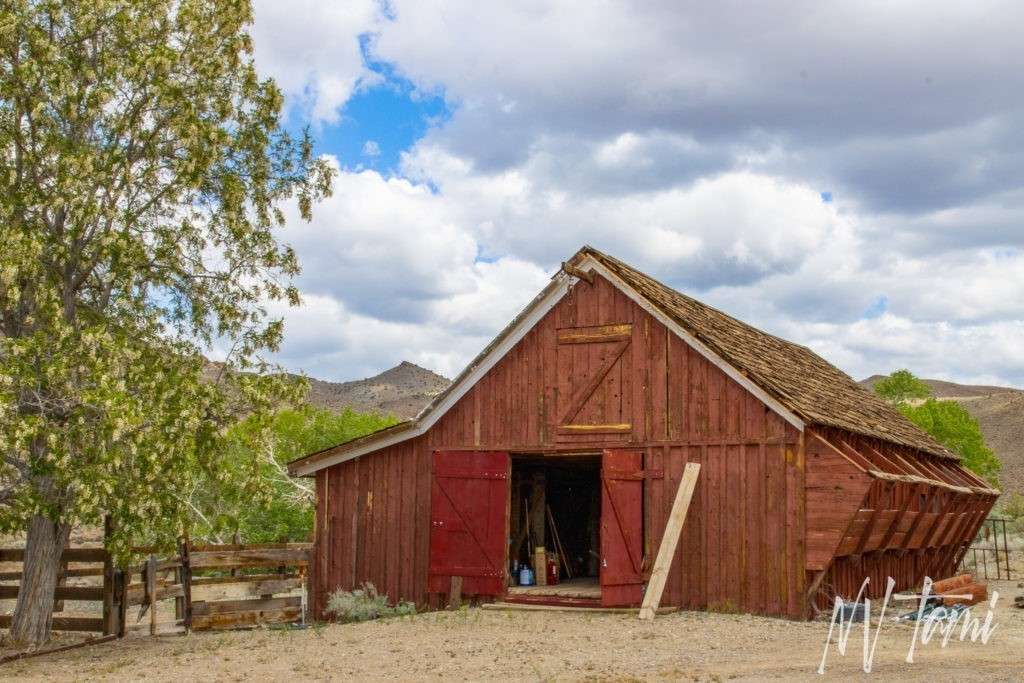
Sadly, in some mines, the mules were stabled underground never to see daylight again. Sutro’s mules were given the best care and had a green meadow to enjoy and a special barn.
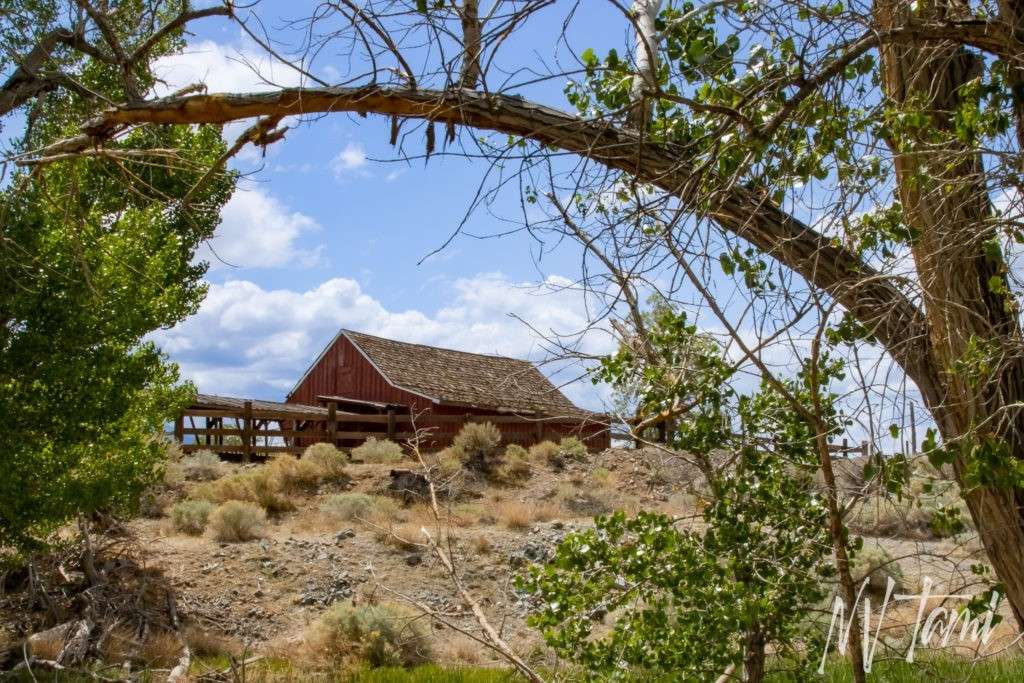

The mule barn is forty by forty-four feet with posts every 18 feet. It included a hayloft, grainery, tack rooms, and wing for a coach and carriage-house. The barn could comfortably house twenty mules.
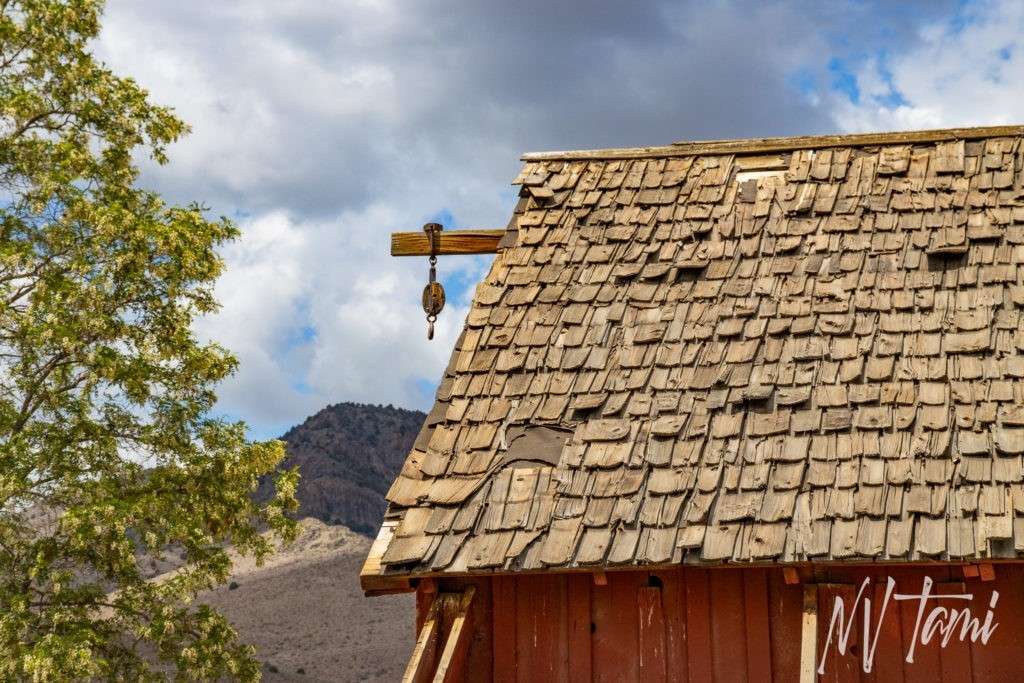
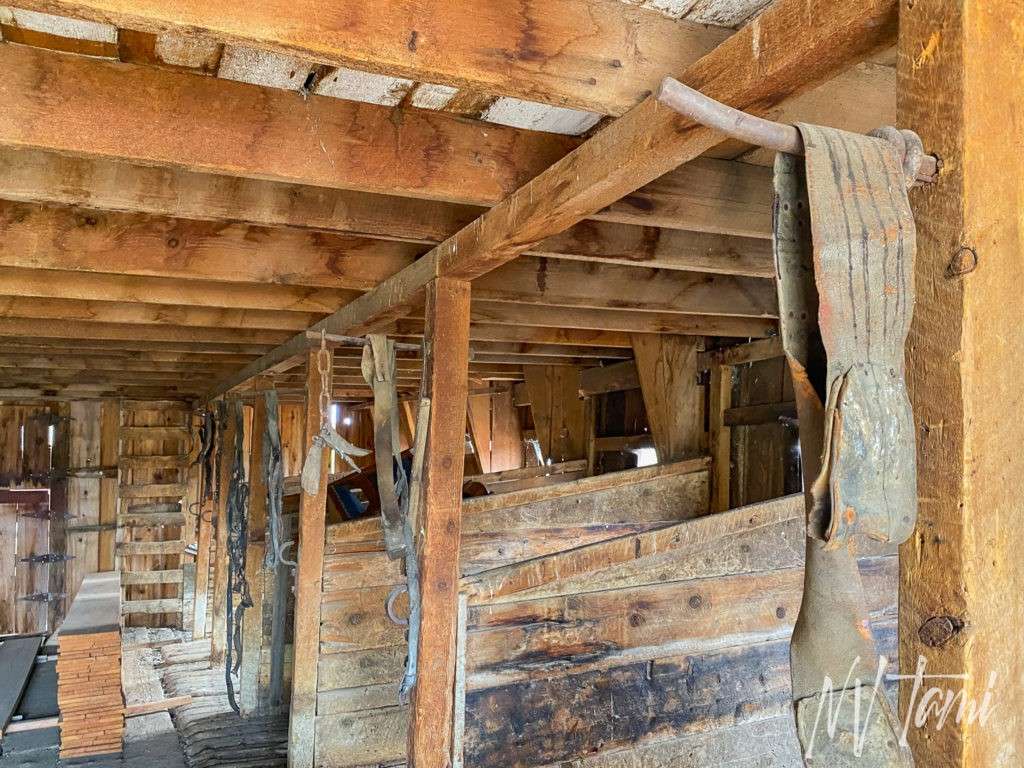
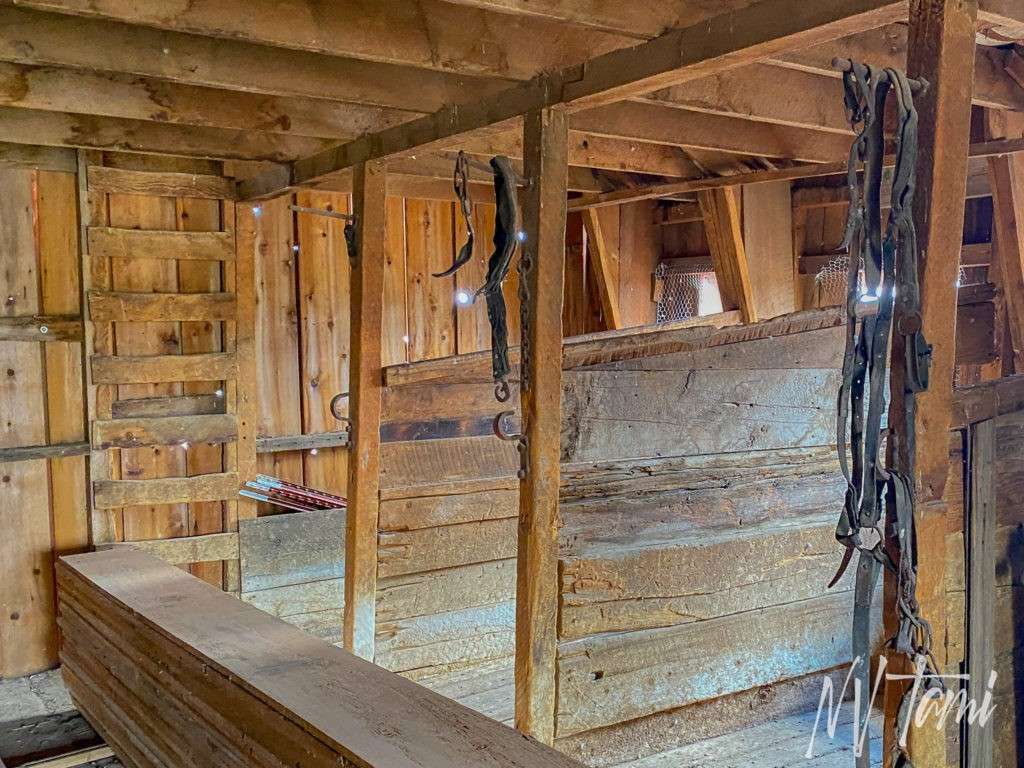

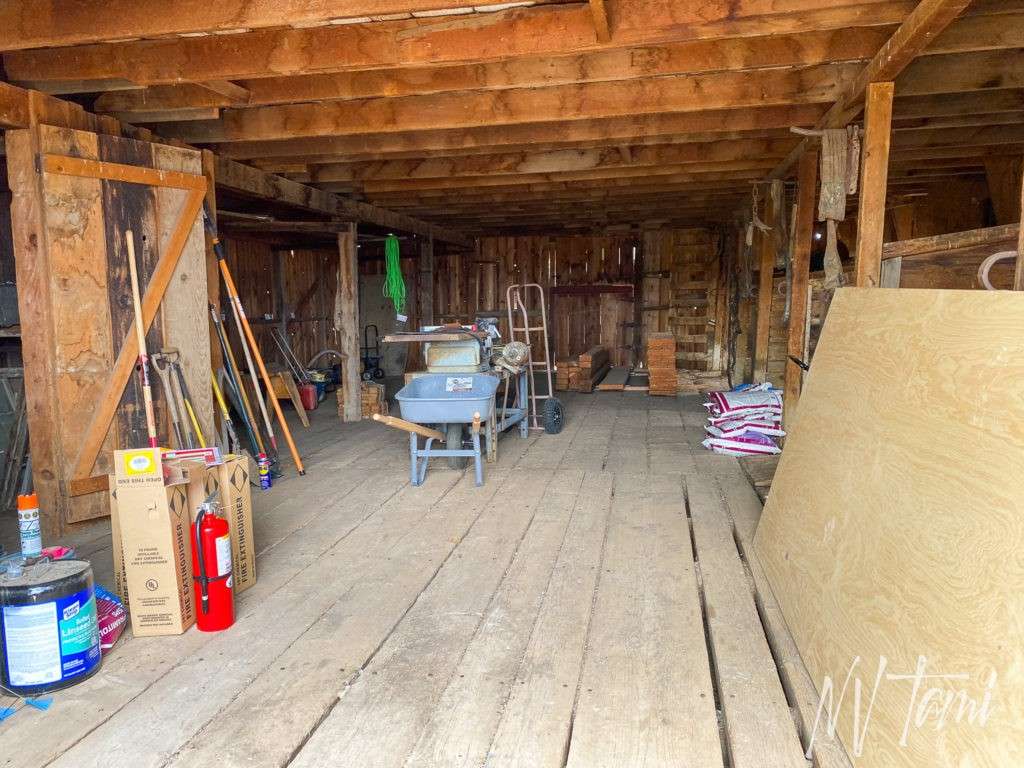
Volunteers lifted and stabilized the barn’s roof, restoring the mule barn and preventing further damage.
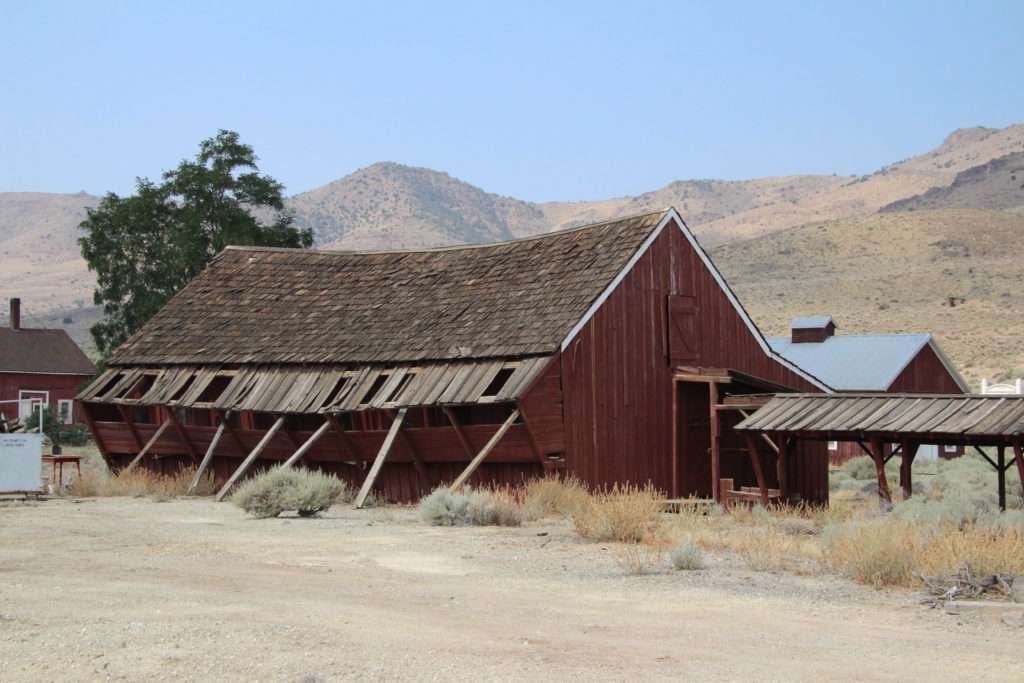

Historic photo credit to Friends of Sutro, unless otherwise noted. Thank you to Dan Webster for the information on the barn.
Sutro Tours
Sutro is open by tour only. Friends of Sutro hosts group tours throughout the year. Better yet, purchase a membership that includes tour tickets. All proceeds are used to restore and preserve Sutro. Contact Sutro Tunnel Site Restoration Project at (775) 900-0507, or email program director Chris Pattison at chris@thesutrotunnel.org.
Want more ghost towns?
For information on more than three hundred ghost towns in Nevada, visit the Nevada Ghost Towns Map or a list of Nevada ghost towns.

For information on more than 300 ghost towns in Nevada, visit Nevada Ghost Towns Map
References
- Carson Valley Nevada: Mule in Mining
- History of Campbell County Tenesee: Sure-footed, sturdy mules, staled unerground, often use to haul coal cars inside mines
- Shamberger, Hugh A. The Story of water supply for the Comstock. United States Department of the Interior, 1972. Pages 34,
- Sharlot Hall Museum: Mules: Unsung Heroes of the Old West
- Stewart, Robert E., and M.F. Stewart. Adolph Sutro: A Biography. Howell-North Books. 1964. Pages 109, 142, 147.
- Visit Carson Valley: My sweetheart is a mule
- Wikipedia: Mules
Reggie Dunbar says
I would like to participate in this historic tour project.
Tami says
Contact Friends of Sutro at (775) 900-0507, or email program director Chris Pattison at chris@thesutrotunnel.org. Here is their website https://thesutrotunnel.org
They are a great group.
Linda says
So happy to read that Adolph Sutro knew the long range benefits of taking good care of his mules through grazing pasture, sunshine, and a well built protective barn. I have a feeling that was rare.
Tami says
Sutro was a pioneer in many ways. I’m sure not all mines were terrible, but I have heard some sad stories about horses and mules in the mines.
Pauline says
This was interesting information concerning the mules that I did not know. It was so nice to read that the mules were taken care of so well as they were so much a part of the work for the mine and men.
Tami says
Thank you, until now there hasn’t been much information available about Sutro’s Mules. I agree, it is nice they had such good care.